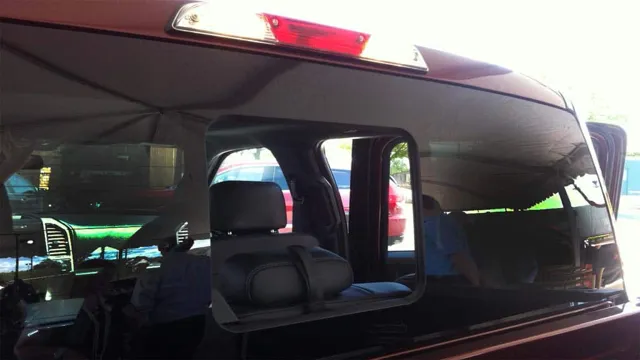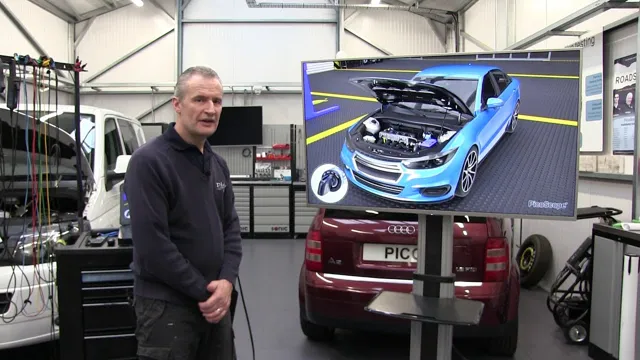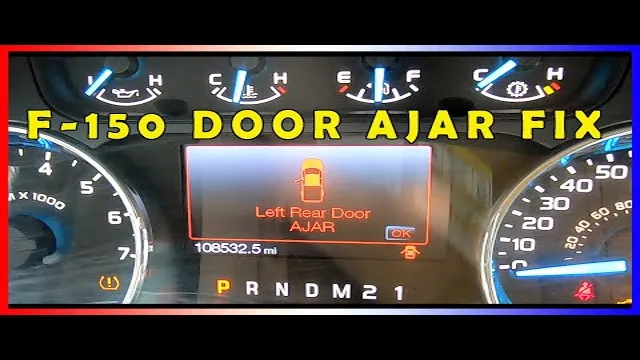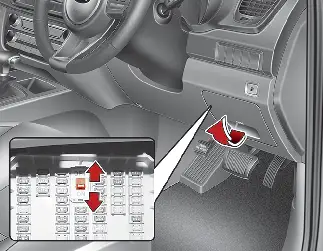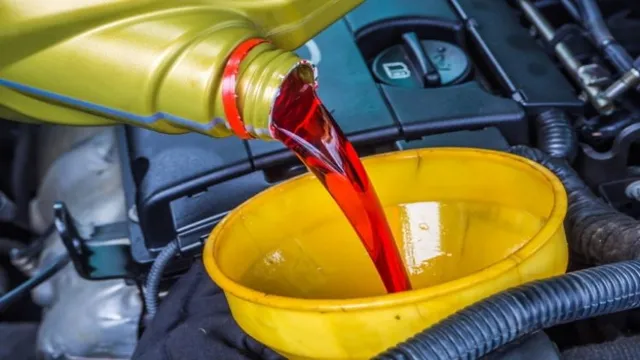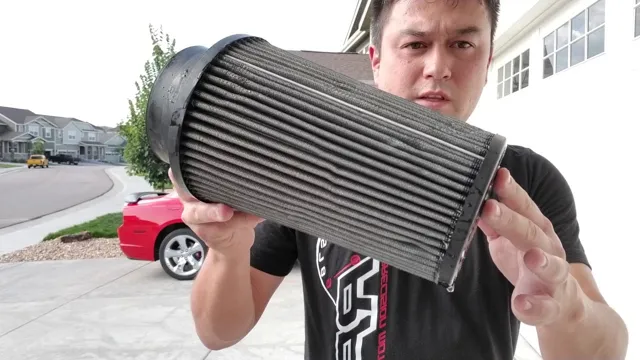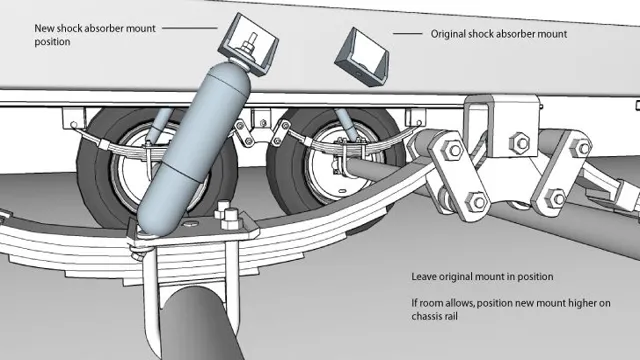Get Your Ford F150 Rear Sliding Window Gliding with These Easy Fix Tips
Are you tired of dealing with a stubborn rear sliding window on your Ford F150? It can be frustrating when the window doesn’t slide smoothly or won’t open at all. Don’t let this issue put a damper on your next road trip or work project! Luckily, fixing the rear sliding window on a Ford F150 is a fairly simple process that can be tackled with just a few tools and a bit of patience. Think of it like a puzzle – once you figure out the pieces and how they fit together, it becomes much easier to solve.
With the right guidance and steps, you can get your sliding window in tip-top shape again and enjoy the fresh air and views from the back seat. Plus, you’ll save yourself the hassle and expense of taking it to a mechanic or dealer. In this blog post, we’ll walk you through the steps to fix your rear sliding window on a Ford F150.
We’ll cover common issues that might be causing the problem, such as broken or worn out components, and provide detailed instructions on how to fix them. We’ll also offer tips and tricks to make the process smoother and easier, so you can get back on the road as soon as possible. So grab your tools and let’s get started on fixing that rear sliding window on your Ford F150!
Identify the Problem
If you’re having trouble with your Ford F150’s rear sliding window, don’t worry. You’re not alone. One common issue owners face is the window becoming stuck, making it difficult to open or close.
The problem is often caused by a buildup of dirt and debris, which can be easily removed with some cleaning. Another issue could be the track or mechanism becoming worn out or damaged, which may require replacement parts and professional repair. Whatever the issue may be, it’s important to identify it first.
Take a closer look at your window and track to determine the root of the problem so you can find the proper solution. With a little patience and some troubleshooting, your Ford F150’s rear sliding window will be functioning smoothly once again.
Check for Broken Glass or Track
When you’re having trouble with your sliding doors, it’s always important to start by identifying what the problem is. One common issue that many people encounter is broken glass or track. This can happen for a variety of reasons, from wear and tear over time to accidental damage.
The first step in addressing this problem is to carefully examine the door and its components to see if anything is visibly broken or damaged. If you spot any cracks or chips in the glass, or if the track appears to be bent or misaligned, then you have likely found the source of the issue. From there, you can determine whether a repair or replacement is necessary and take the appropriate steps to get your doors functioning properly again.
Remember, ignoring a broken glass or track can lead to further damage or even injury, so it’s always better to address the problem promptly.
Check the Motor and Wiring
When your electric scooter is not working properly, one of the first things you should check is the motor and wiring. The motor is the heart of your scooter, and any issues with it can cause your ride to become sluggish or stop altogether. You may also have wiring problems that are preventing the motor from receiving an adequate power supply.
To identify the problem, you should inspect the motor for any visible signs of damage or wear and tear. Look for frayed wires, dirt buildup, or any other issues that could be causing a problem. You may also want to test the motor with a multimeter to ensure that it is receiving a steady supply of power.
If the motor and wiring are not functioning properly, it may be time to replace them to get your scooter back up and running. With some basic troubleshooting and maintenance, you can keep your electric scooter running smoothly for many miles to come.
Tools You’ll Need
If you’re looking to fix the rear sliding window of your Ford F150, there are a few tools you’ll need to get started. First and foremost, you’ll need a replacement window, which can be purchased from most auto parts stores or online. Additionally, you’ll need a few basic hand tools, such as screwdrivers, pliers, and a socket set.
You may also want to invest in a sealant and a trim tool to make the job easier. Once you have everything you need, start by removing the old window and any remaining adhesive or sealant. From there, carefully install the new window, making sure it’s properly sealed and secure.
With the right tools and a little patience, you can have your Ford F150’s rear sliding window back in working order in no time.
Screwdriver
When it comes to home repairs and DIY projects, having a good set of tools is a must. One essential tool that you’ll need is a screwdriver. Whether you need to tighten a loose screw on your chair or assemble a new piece of furniture, a screwdriver comes in handy.
When choosing a screwdriver, you’ll want to consider the type of screw head you’ll be dealing with. Phillips-head screws require a Phillips-head screwdriver, while flathead screws require a flathead screwdriver. Investing in a set of screwdrivers with different sizes and types of heads will ensure you have the correct tool for any job.
Additionally, you’ll want to look for screwdrivers with comfortable handles that provide a good grip, as this will make it easier and more comfortable to use. Overall, a good quality screwdriver is a tool that you’ll use time and time again, making it a worthwhile investment for any DIY enthusiast.
Pliers
When it comes to DIY tasks or making repairs around the house, having the right tools is crucial. One of the most essential items in any toolbox is a good pair of pliers. Pliers come in various sizes and shapes, and each type serves a particular purpose.
Needle-nose pliers are great for small detailed work like jewelry-making or electronics, while standard slip-joint pliers are perfect for gripping and twisting objects. Tongue-and-groove pliers are ideal for plumbing tasks, and locking pliers can hold objects in place while you work on them. Regardless of the type, a good set of pliers should have comfortable handles that provide a firm grip and be made of sturdy material that won’t bend under pressure.
Having pliers in your toolbox will come in handy for a variety of tasks, making them an essential tool for any DIYer or homeowner.
Multimeter
When it comes to DIY electronics and electrical work, a multimeter is an essential tool to have in your arsenal. It allows you to measure voltage, current, and resistance and can aid in diagnosing issues with circuits and components. But before you start using a multimeter, there are a few other tools you’ll need to ensure you can use it safely and effectively.
One essential tool is a set of probes that can attach to the multimeter leads to make contact with the circuit. You may also need to have backup batteries on hand in case the multimeter runs out of power during use. Additionally, it’s recommended to have a voltage detector or non-contact voltage tester to check for the presence of electricity before working on a circuit to avoid dangerous shocks.
By having these tools on hand, you can approach electrical work with confidence and ensure your safety while using a multimeter.
Step-by-Step Guide
When your Ford F150 rear sliding window is stuck or broken, it can be frustrating and inconvenient. However, with a few simple steps and some tools, you can fix it yourself and save money on repairs. First, you need to remove the trim panel from the inside of the rear sliding window.
Use a flathead screwdriver to remove the screws and pry off the trim panel. Next, you need to remove the window mechanism, which is located behind the panel. Use a socket wrench to remove the bolts holding the mechanism in place.
Once the mechanism is removed, you can inspect it for any damage or wear. If it needs to be replaced, you can order a new one online or from a local auto parts store. Alternatively, if it just needs to be repaired, you can use a lubricant to grease the gears and fix any binding issues.
Finally, reinstall the mechanism and the trim panel, and test the rear sliding window to make sure it’s working correctly again. By following these simple steps, you can fix your Ford F150 rear sliding window and get back on the road in no time!
Remove the Interior Trim
Removing the interior trim of your car is a great way to access components that may need repair or cleaning. Before you start, make sure you have the necessary tools, such as a trim removal tool, a flathead screwdriver, and pliers. Begin by removing any screws that are holding the trim in place, then gently pry the edges of the trim away from the car’s frame.
Use the trim removal tool to safely remove any clips that are holding the trim in place. If any wiring or cables are attached to the trim, carefully unplug them to avoid damage. With all the clips and screws removed, the trim should come off easily.
Be sure to keep all the components and fasteners organized so you can easily reinstall everything when you’re finished. Overall, removing the interior trim is a simple and straightforward process that can give you easy access to the areas of your car that need attention.
Access the Sliding Window Assembly
Accessing the sliding window assembly can seem intimidating, but it’s actually a straightforward process. First, remove any trim or molding that covers the assembly, using a pry bar or screwdriver. Next, unscrew or unbolt the track that holds the window in place.
Depending on your window’s design, you may need to lift or tilt the window to release it from the track. Carefully remove the window from the track, keeping in mind any attachments or fittings that may still be connected. Once the window is removed, you can easily access the sliding window assembly for maintenance or repairs.
With a little know-how and some basic tools, accessing the sliding window assembly is a simple task that can save you from costly repairs down the line. So why not give it a try?
Remove the Motor
Removing the motor from a machine can be intimidating, but with the right tools and guidance, it’s a manageable task. To begin, ensure that the power source has been disconnected or switched off. Then, disconnect all the wires and cables that are connected to the motor.
Once that is done, loosen and remove all bolts and screws that are holding the motor in place. It’s important to note that motors can be heavy, so lifting it out may require assistance. Always lift with the knees and keep a safe, ergonomic posture.
Once the motor is safely removed, it can be inspected and either repaired, replaced or recycled. By following these steps, the task of removing a motor can be easily accomplished, and the machine can be functioning again in no time.
Test the Motor and Wiring
When it comes to testing the motor and wiring of your machine, it’s essential to follow a step-by-step guide to ensure that you don’t miss anything crucial. First, you’ll want to disconnect the power supply and remove the motor from the machine. Once you’ve done this, you can test the motor with a multimeter to check for any continuity issues or shorts.
Next, inspect the wiring for any signs of damage or wear and tear, paying close attention to the connections between the motor and the power supply. You can use a wire stripper to remove the protective covering and check the wires for any faults. Once you’ve ensured that the motor and wiring are free from any issues, you can re-install them into the machine and test the machine’s functionality.
By taking the time to test the motor and wiring thoroughly, you can avoid potential equipment failure and improve the overall performance of your machine. So, don’t overlook this critical step in maintaining your equipment, and you’ll be sure to get the most out of your investment.
Replace the Motor or Wiring (if needed)
If your drive doesn’t seem to be functioning properly, you may need to replace the motor or wiring. Before you start, make sure you have the correct tools and parts. Once you have all the necessary items, the first step to replacing the motor or wiring is to disconnect the power to the drive.
Next, carefully remove the old motor or wiring, taking note of how everything was connected. Installing the new motor or wiring should be done with equal care, following the manufacturer’s instructions and ensuring that everything is correctly connected. After installation, you can test the drive to make sure that everything is working as it should.
In some cases, you may need to troubleshoot any issues that arise before using the drive again. Overall, replacing the motor or wiring can be a relatively simple process, as long as you take things slow and follow the correct steps.
Reinstall the Sliding Window Assembly
When it comes to fixing your sliding window, reinstalling the sliding window assembly is a crucial step. This process starts by removing any old weatherstripping or adhesive from the frame. Once the surface is smooth and clean, apply a new weatherstrip to the top and bottom of the window profile.
You should also apply silicone caulk to the frame to prevent water infiltration. After preparing the window frame, install the sliding window assembly, starting with the bottom sash and working your way up. Make sure each section is properly positioned and aligned before securing it in place with screws.
Once you’ve installed the entire assembly, test the window to ensure proper sliding and locking functionality. With these steps, your sliding window will be running smoothly in no time. Remember to use caution when working with glass and always wear gloves and protective eye gear to avoid injury.
Reattach the Interior Trim
Now that you’ve successfully removed and replaced your car’s damaged or old interior trim, it’s time to reattach it. But where to begin? Here’s a step-by-step guide to make sure the reattachment process goes smoothly. First, make sure your work area is clear of any debris, tools, or other materials.
This will give you enough space to move around and work without any obstacles. Next, take your interior trim and line it up with the mounting brackets on your car’s interior. You may need to apply some pressure to ensure the trim is properly aligned before proceeding.
Once aligned, gently push the interior trim into place, making sure each mounting bracket snaps into place. You can use a small rubber mallet or a soft cloth to gently tap the trim into the brackets – just be careful not to damage the trim or the brackets themselves. Finally, inspect your work to make sure everything is securely attached and there aren’t any gaps or loose areas.
Give the interior trim a gentle tug to make sure it’s snugly in place. If everything looks good, you’re ready to take your car out for a spin! Reattaching your car’s interior trim may seem daunting at first, but with a little patience and attention to detail, it’s a relatively straightforward process. Just take your time, stay focused, and don’t be afraid to ask for help if you need it.
With a little effort, your car’s interior will look as good as new!
Preventing Future Issues
If you own a Ford F150 with a rear sliding window, you know that it can be a great feature, but it can also lead to issues if not properly maintained. To prevent future issues, there are a few things you can do. First, ensure that the window tracks are cleaned and lubricated regularly to prevent sticking or jamming.
Second, avoid slamming the window shut as this can damage the window or the tracks over time. Third, be mindful of any debris or objects that may get caught in the tracks or window, as this can also cause damage. By following these simple steps, you can ensure that your Ford F150 rear sliding window will continue to function properly and prevent the need for costly repairs in the future.
So, take care of your truck and it will take care of you, including those awesome rear sliding windows!
Clean and Lubricate the Window
After cleaning your windows thoroughly, it’s important to take preventive steps to avoid future issues. One effective way to do this is by lubricating the window. This will help it open and close smoothly, prevent any friction, and reduce wear and tear.
To do this, you can use a silicone-based spray or a light lubricating oil such as WD-40. Be sure to apply it to the tracks and hinges carefully and wipe away any excess oil. Doing this simple step every few months will ensure that your windows continue to operate smoothly and will extend their lifespan.
Remember, prevention is key to avoid costly repairs down the line.
Regularly Check for Damage
Regularly checking for damage is crucial to preventing future issues with your property. It’s important to conduct routine inspections and make necessary repairs as soon as possible. Ignoring small issues can quickly escalate and lead to more significant problems that are more expensive to fix.
Taking preventative measures can save you time, money and the hassle of dealing with larger problems down the line. Similar to how getting regular checkups with your doctor can prevent future health issues, inspecting your property can save you from dealing with more significant and costly damage. So, don’t overlook the importance of regular checkups and take the necessary steps to ensure your property stays in top condition.
Conclusion
In conclusion, fixing your Ford F150’s rear sliding window is not as complicated as it may seem. With the right tools, a bit of patience, and some YouTube tutorials, you can replace the sliding glass with ease. And if all else fails, just remember that duct tape fixes everything (but we don’t actually recommend using duct tape for this specific repair).
So go ahead, roll down that window and enjoy the breeze, knowing that you’re now a certified Ford F150 rear sliding window repair expert.”
FAQs
Why is my Ford F150 rear sliding window not closing properly?
There could be several reasons why your sliding window is not closing properly – it could be due to a faulty motor, a broken mechanism, or simply debris stuck in the tracks. We recommend getting it inspected by a professional mechanic.
How much does it usually cost to fix a Ford F150 rear sliding window?
The cost of repair depends largely on the extent of the damage and the parts that need to be replaced. On average, you can expect to pay between $150-$400 for a sliding window repair.
Can I fix my Ford F150 rear sliding window myself?
While it is possible to fix the sliding window yourself, it is not recommended unless you have experience with automotive repairs. The mechanism can be complex and require special tools, so it’s best to leave it to the professionals.
How long does it take to repair a Ford F150 rear sliding window?
The time it takes to repair a sliding window varies depending on the extent of the damage and the availability of parts. In general, it can take anywhere from a few hours to a full day to get the window fixed.

